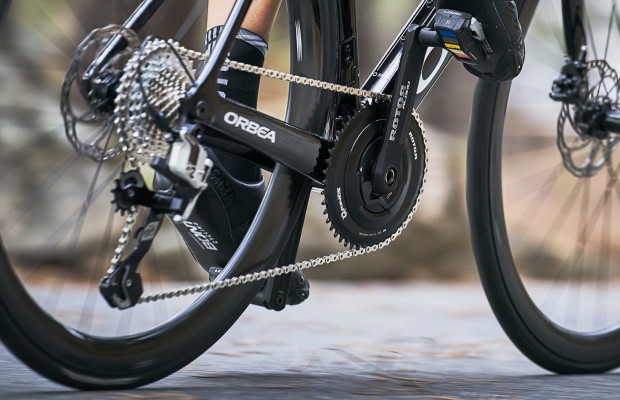UCI puts limit on narrow handlebars
Increasingly narrow handlebars have become more and more popular in the peloton because of the aerodynamic improvement they bring. The latest update of the UCI's Technical Regulation, which come into force on January 1st, puts a stop to this trend before it becomes a safety issue.

What's new in the UCI's Technical Regulation for the peloton in 2023?
The UCI's Technical Regulation is a very comprehensive document in which the highest international cycling body specifies all the parameters that the bicycle and other components and accessories must meet for use in competition, such as the famous weight limit of 6.8 kg or the controversial rule that determines the maximum height of the socks.
Since last year's UCI ban on aerodynamic positions where riders emulated the time trial position when riding at top speed, there has been a proliferation of increasingly narrow handlebars in the peloton in order to achieve a similar aerodynamic advantage to that position, with the handlebars being placed inwards so that the resulting position of the rider is as narrow as possible.
RECOMENDADO

Black Friday 2025 cycling bargains: save on Garmin, POC, Maxxis and more

Black Friday Garmin 2025: the ultimate guide to choosing your GPS at the best price

How to wash your cycling clothes? 10 keys to make them always look new

Cycling can help you fight the effects of the time switch

Important keys to make your training work

Easy to apply tips for riding faster

A substantial gain, as it is estimated that for every 2 centimetres reduction in the width of the frontal area that the rider offers to the wind, an improvement of 25 W is obtained at a relative airflow speed of 40 km/h, the standard figure used to make these measurements.
For 2023, it includes some new features, including the update of standard 1.3.012, which previously only defined the maximum width of the bike measured between the outermost parts, i.e. at the handlebars, which is still defined as 500 mm. A sentence is added to this standard that affects conventional handlebars used on the road and track, setting the minimum width at 350 mm.

An update that in principle does not affect any of the handlebars currently used in the peloton but which, however, may not take into account the also increasingly common flare handlebars, i.e. handlebars that are very narrow at the top where the levers are anchored and open at the bottom, a very common line in gravel bikes and which is increasingly common in road bikes, even in standard models such as the new Trek Madone.
To limit this aspect, the UCI Technical Regulation add, in article 1.3.022, diagrams formed by 80 mm wide rectangles in which the dimensions of the handlebars must fit, which, for practical purposes, also limits the maximum flare that a competition handlebar can have.

In addition, the diagrams included in this rule serve to define the maximum dimensions of the different parts of the aerodynamic handlebar/stem sets that are commonly fitted to current bikes and which have generously wide profiled areas. In this case, the horizontal area, which is usually the profiled area, may not be wider than 40 mm, or the width of the stem area may not exceed 20 mm.
This article also refers to another aspect related to aerodynamics such as the use of increasingly longer stems, firstly due to the use by professionals of bike sizes smaller than those that really correspond to them and, secondly, to achieve a more stretched and lower position which, as with the width of the handlebars, reduces the frontal area.

In this case, the limitation is set with reference to the vertical of the front wheel axle, stating that the front of the handlebars shall not be more than 100 mm ahead of this axle.
In addition to the rules referring to road handlebars, in this revision of the Technical Regulation, the UCI has also included an important review of the measurements used in time trials and the placement of aerodynamic couplings on these bikes, something very much in demand by cyclists, redefining aspects such as the maximum reach to which they can be fixed depending on the height of the cyclist.